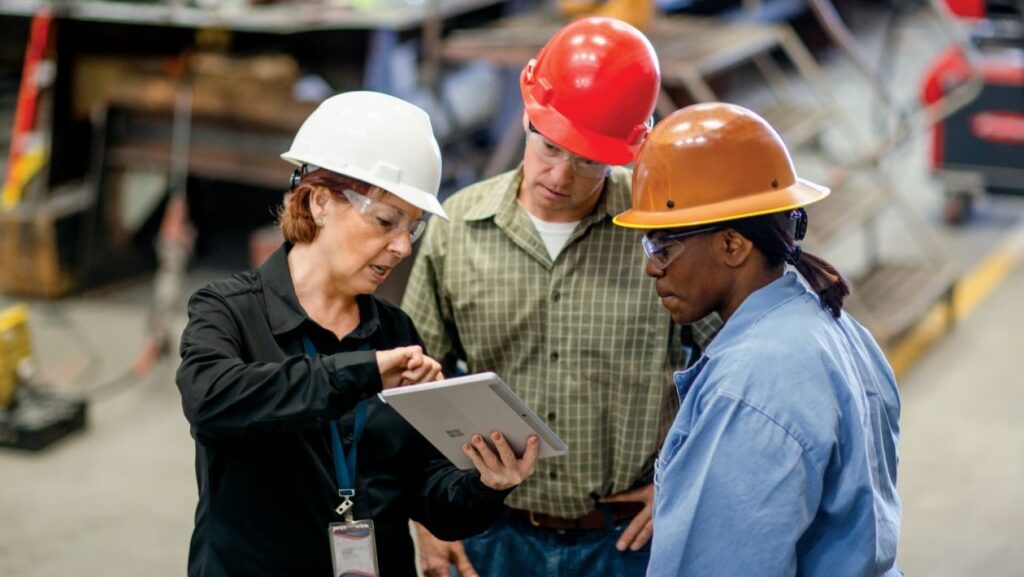How to avoid vendor lock-in with Industrial IoT Solutions
Explore how to avoid vendor lock-in with Microsoft Azure IoT. Discover strategies to guide your industrial IoT solutions with flexibility and scalability.

Learn how BMW, Aurobay, Denso, and others use AI to modernize their manufacturing processes.

Explore how to avoid vendor lock-in with Microsoft Azure IoT. Discover strategies to guide your industrial IoT solutions with flexibility and scalability.
This blog has been co-authored with Yury Gomez, Business Strategy Leader, WW Manufacturing While the manufacturing industry has long been one of the leaders driving digital innovation, helping to fuel growth and redefine efficiencies, today’s disruptions—whether these are travel restrictions, increased health & safety precautions, or a new world of modern work—are challenging the traditional approaches used to facilitate agile process
It’s been two years since we last invited you to join us at Hannover Messe in Germany, where we mingled with 220,000 of our manufacturing colleagues from around the world to share and explore the leadership and innovations on display. Since then we’ve built on our theme of augmenting human intelligence from Hannover Messe 2019, helping manufacturers accelerate their digital
As I reflect on our customers’ and partners’ achievements in such trying times, their successes and innovations inspire me. Looking ahead, I’m both optimistic and excited as the industry continues its forward momentum. I’d like to highlight a few recent examples of our collaboration with leaders in the industry. In January, General Motors and Cruise
Filled with unimaginable change caused by the pandemic, the manufacturing industry witnessed a perfect storm: a significant disruption in terms of business continuity, operational visibility, remote work, employee safety, and the list goes on. However, manufacturers have responded and are continually adapting as we all go through the recovery process. To help you accelerate this journey, announcing the Microsoft Cloud for Manufacturing, available for public preview
Through its four-decade partnership with leaders in the automotive industry, there’s one core learning that Microsoft continues to see: with challenge comes increased opportunity for innovation. For vehicle makers, this has meant turning the business model upside down, redefining an industry, and working at a blistering pace transforming from traditional manufacturers to mobility service providers.
Can digitization address the manufacturing skills gap and worker safety? Even before the pandemic, manufacturing has been changing so quickly that it can be difficult for your workforce to keep up. In fact, Deloitte and the Manufacturing Institute had estimated that up to 2.4 million US manufacturing jobs could remain unfilled between 2018 and 2028 because of a lack of adequate skills.1 According to a Deloitte
Discover how blockchain enhances supply chain predictability, resiliency, and traceability. Learn about innovative solutions for supply chains with Microsoft.
Think of an automotive manufacturer and you might picture huge factories, large production lines, robotic assembly, and innumerable mechanical parts. But it’s what lies underneath all these things that’s driving the future of automotive and mobility and the companies behind it: software. As the mobility industry and its customer needs evolve, automotive companies have been
The global marketplace is evolving rapidly, and the ability to adapt is a defining factor between manufacturers that merely survive, and those that thrive. As rising costs, supply chain issues, skills gaps, and challenges related to COVID-19 escalate, manufacturers must look to intelligent cloud and intelligent edge solutions to build smart, agile factories. Internet of
In 1970 NASA faced a crisis: A ruptured propellant tank threatened the lives of three astronauts aboard Apollo 13. To save them, NASA engineers used a replica of Apollo 13 on earth, and used resources they knew were available to the astronauts to devise a safe method for getting them home. Today that same approach,
Who doesn’t love the clean lines, the bold curves, the shiny finish of a new car? But just as exciting is what’s going on under the hood. The rise of EVs, cloud-connected technologies to help drivers avoid collisions, communications systems that become as integral to our lives as our phones—it’s all happening. Here. Now. Today. So are cloud-based simulations that